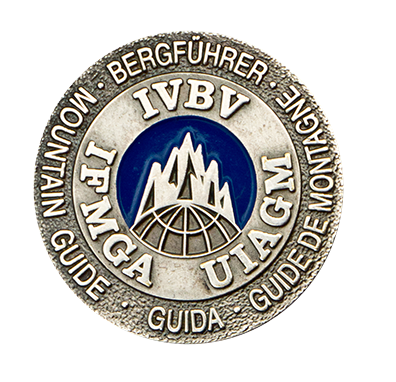Last spring, on a BC Ski trip with Cathy, I realized I had much to learn from the Canadians about avalanches. If I poached that knowledge, I could bring it back to Alaska to share in avalanche classes and while guiding.
This year, Cathy I spent a week in Rossland, British Columbia with guide and avalanche instructor Keith Robine and his family. There I guided a couple days at Big Red Cats with Keith and shadowed/taught an AST2 avalanche course with him through his business Kootenay Avalanche Courses.
Rossland attracts adventurous people. Cathy and I visited with friends Steve Bros, Jim Mosher and Mike Cummings who I skied with in Denali last spring. We had dinner with Kynan Bazley, a Kiwi who I climbed with in New Zealand and hadn't seen in years. We also visited with Jessie and Tami Brown who we climbed with in Kalymnos. Cathy injured her leg early in the trip, so the Rossland friendliness was extra-appreciated.
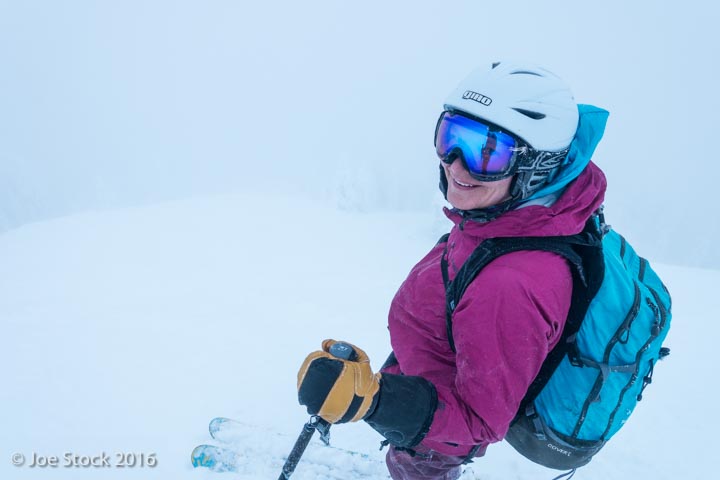
First day in BC, getting the grand tour with Ann Quarterman, Keith's wife, on Mount Roberts, an off-piste area near Red Mountain resort. Through fog and thick trees I followed Ann to fields of what's called "Kootenay Powder." It's deep and untracked, the density of Alta snow. Not too light that you're hitting bottom. Not heavy like Cascade Concrete or Alyeska Ready-Mix. Just right for addiction.
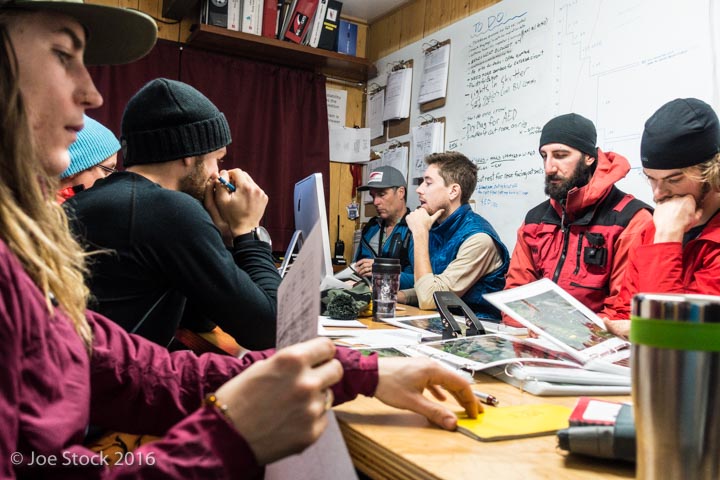
Morning guide meeting at Big Red Cats.
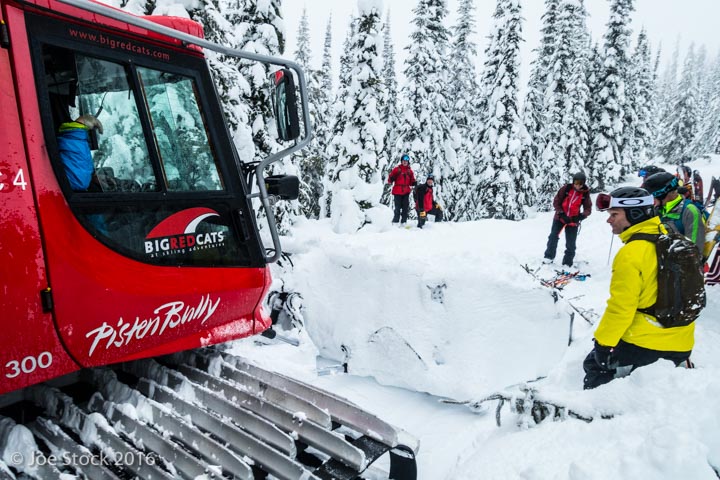
Big Red Cats operates four cats with 12 clients per cat. That's a lot of people, but they have the terrain and powder to handle it.
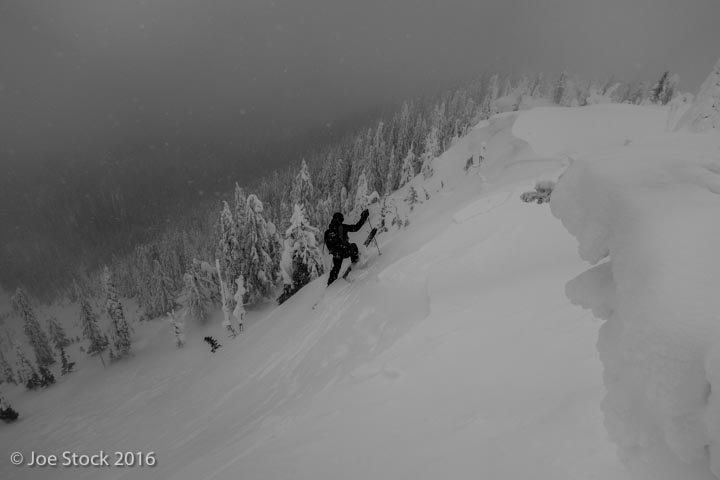
Keith ski cuts a size 2 on Mount Mackie. Overnight the slab had stiffened and took extra thumping to release into a tree-rattling avalanche.
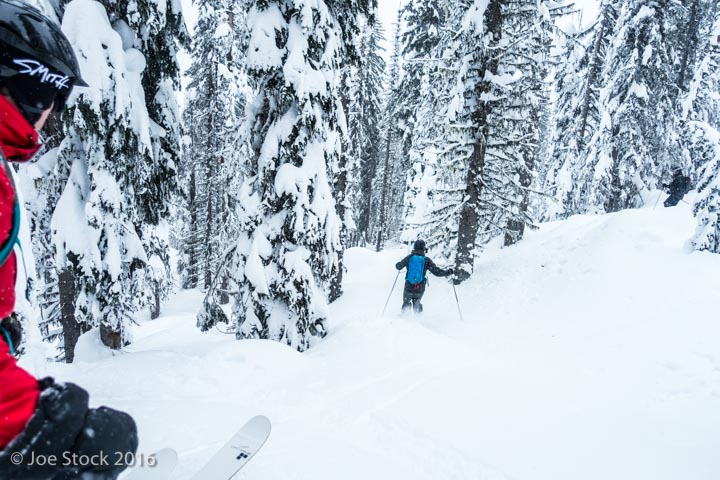
The biggest thing I learned at Big Red Cats was how to guide in thick trees. It's a whole different set of techniques:
Use the buddy system.
Hoot to stay in vocal contact.
Ski in pairs on either side of the guide tracks.
Trees increase consequences of an avalanche. Select terrain with extra caution for the snowpack.
Stay close to your buddy because sound doesn't travel well in trees.
Tree wells are the greatest hazard in thick trees. Make turns below trees to avoid falling in.
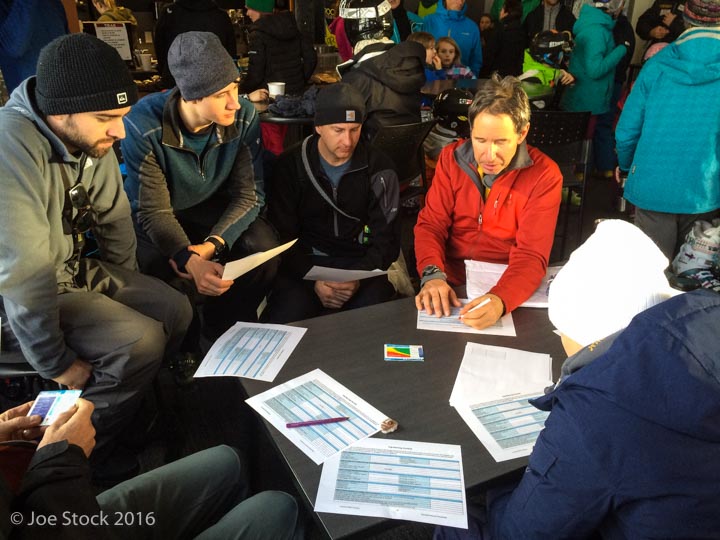
Keith demonstrating the Canadian Avalanche Association Trip Plan Form before touring on day two of the AST2 course. Avalanche Safety Training is the recreational avalanche education track in Canada. This year, the US will split into professional and recreational tracks, so we can act more Canadian.
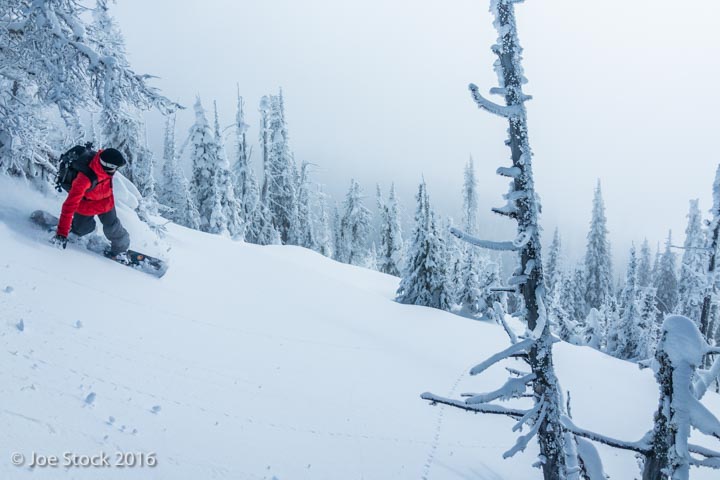
Trees re-define avalanche terrain. By the fifth day of tree skiing I could see trees as something besides baseball bats.
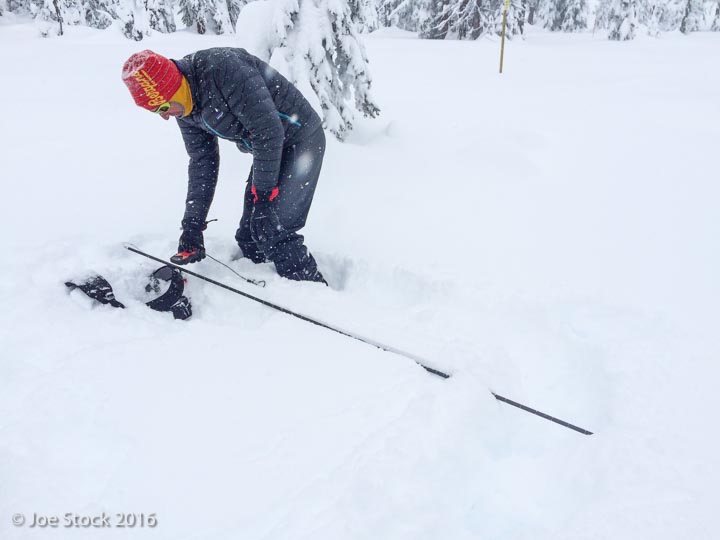
Keith demonstrating the beacon fine search along a probe. This keeps the beacon at a uniform height and helps students visualize a grid.
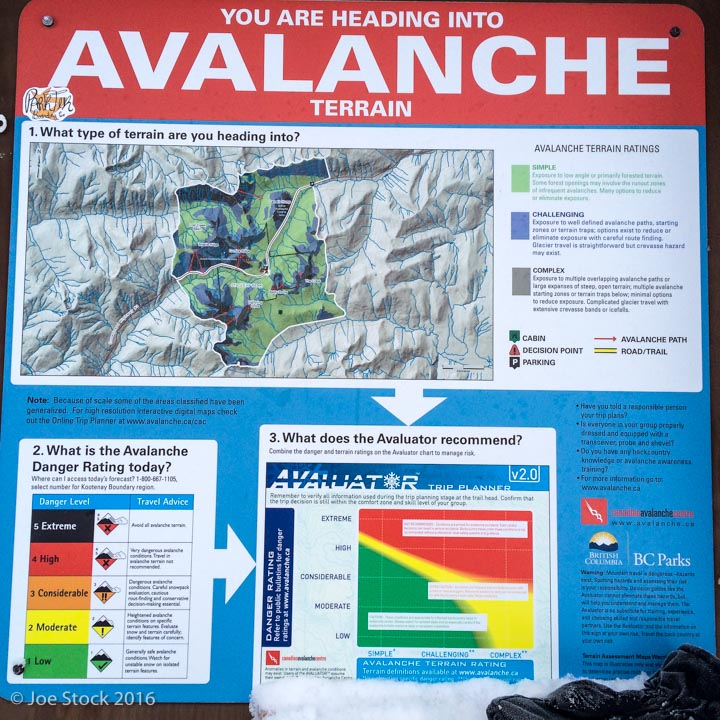
Canadian Avalanche Association billboard at Kootenay Pass. Those Canadians are dialed.
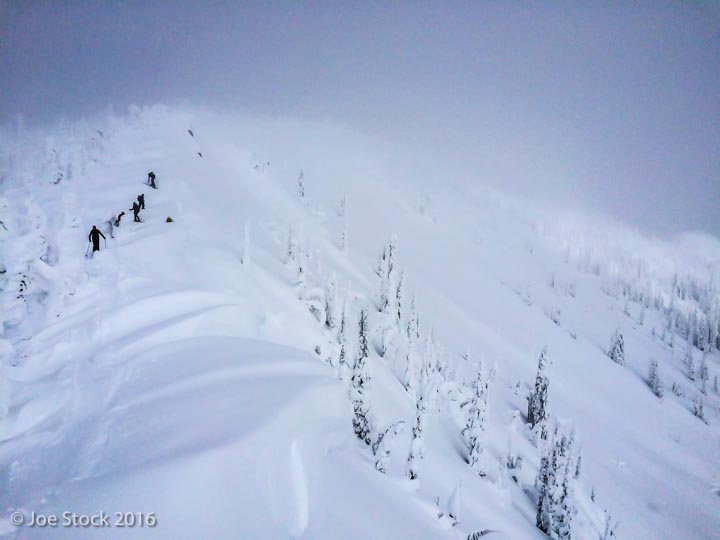
Skiing at Kootenay Pass for our final day on the AST2. Mountains of Kootenay Powder.
Thanks for a great trip Keith, Ann, Big Red Cats, Jim, Steve, Mike, Kynan, Barb, Jessie and Tami! And thanks Jim, for connecting me with Keith!
